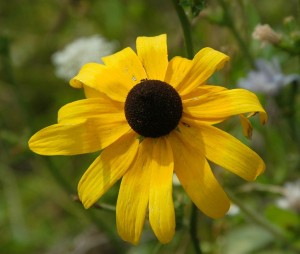When August heat looms, plant these blooms
July 31, 2014Are you looking to add some color to your flower gardens now that other blooms are starting to fade?
It can be tough to find plants that not only bloom in the heat of August, but can tolerate what is often one of the driest months of the year. While they all will need regular watering at first, once they take root and get established, they’ll thrive in the dry August heat.
Here are a few recommendations we found, with some help from Better Homes and Gardens, the Penn State Cooperative Extension, and the Texas AgriLife Extension Service. Some flower, some have colorful or interesting foliage, and some have both. All of them can tolerate dry, hot weather reasonably well.
The first one on the list, Black-eyed Susan, will attract birds and butterflies to the garden and brighten things up with its yellow blooms. 
Four o’clocks grow well in sun or shade, come in a variety of colors, and seem to thrive in hot, dry conditions. According to the Texas AgriLife Extension service, , they were cultivated by the Aztecs. They will sometimes establish themselves as perennials, but are most often planted as annuals.
The perennial Russian sage — which actually hails from central Asia — has light purple blooms, silvery-green foliage, loves the heat and doesn’t require a lot of water. While the leaves smell amazing, they are not edible and should not be confused with culinary sage.
Dusty Miller doesn’t flower, but its silvery-white, fuzzy foliage adds an interesting element to any garden. It loves hot, dry conditions, and although it’s technically a perennial, often has to be replanted due to our cold winters.
Threadleaf tickseed, another perennial, comes in yellow, white, or pink and has thin, dark green foliage. It will flower all season and grows in large clumps.
Yarrow comes in a multitude of colors, and this perennial tolerates dry, warm weather well.
Petunias seem to do well in almost any condition — hot or cold, wet or dry — and these annuals are available in a wide range of colors.
Annual phlox is easy to grow, takes heat and drought in stride, and has blue, pink, red or white flowers.
Zinnias come in annual and perennial varieties, are available in a number of different colors, and are native to the Southwestern U.S. and South America. They do very well in hot, dry climates, and are loved by butterflies.
No matter what you choose to grow, a few inches of compost or mulch on the garden will help conserve moisture in the soil — leading to healthier, happier plants that add color all season long.